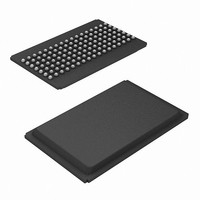CY7C1370D-200BGXC Cypress Semiconductor Corp, CY7C1370D-200BGXC Datasheet - Page 13

CY7C1370D-200BGXC
Manufacturer Part Number
CY7C1370D-200BGXC
Description
IC SRAM 18MBIT 200MHZ 119BGA
Manufacturer
Cypress Semiconductor Corp
Type
Synchronousr
Specifications of CY7C1370D-200BGXC
Memory Size
18M (512K x 36)
Package / Case
119-BGA
Format - Memory
RAM
Memory Type
SRAM - Synchronous
Speed
200MHz
Interface
Parallel
Voltage - Supply
3.135 V ~ 3.6 V
Operating Temperature
0°C ~ 70°C
Access Time
3 ns
Maximum Clock Frequency
200 MHz
Supply Voltage (max)
3.6 V
Supply Voltage (min)
3.135 V
Maximum Operating Current
300 mA
Maximum Operating Temperature
+ 70 C
Minimum Operating Temperature
0 C
Mounting Style
SMD/SMT
Number Of Ports
4
Operating Supply Voltage
3.3 V
Lead Free Status / RoHS Status
Lead free / RoHS Compliant
Lead Free Status / RoHS Status
Lead free / RoHS Compliant, Lead free / RoHS Compliant
Available stocks
Company
Part Number
Manufacturer
Quantity
Price
Company:
Part Number:
CY7C1370D-200BGXC
Manufacturer:
Cypress Semiconductor Corp
Quantity:
10 000
instruction register and the TAP controller is in the Capture-DR
state, a snapshot of data on the inputs and output pins is
captured in the boundary scan register.
The user must be aware that the TAP controller clock can only
operate at a frequency up to 20 MHz, while the SRAM clock
operates more than an order of magnitude faster. Because there
is a large difference in the clock frequencies, it is possible that
during the Capture-DR state, an input or output will undergo a
transition. The TAP may then try to capture a signal while in
transition (metastable state). This will not harm the device, but
there is no guarantee as to the value that will be captured.
Repeatable results may not be possible.
To guarantee that the boundary scan register will capture the
correct value of a signal, the SRAM signal must be stabilized
long enough to meet the TAP controller’s capture set-up plus
hold times (t
captured correctly if there is no way in a design to stop (or slow)
the clock during a SAMPLE/PRELOAD instruction. If this is an
issue, it is still possible to capture all other signals and simply
ignore the value of the CK and CK captured in the boundary scan
register.
Once the data is captured, it is possible to shift out the data by
putting the TAP into the Shift-DR state. This places the boundary
scan register between the TDI and TDO pins.
PRELOAD allows an initial data pattern to be placed at the
latched parallel outputs of the boundary scan register cells prior
to the selection of another boundary scan test operation.
The shifting of data for the SAMPLE and PRELOAD phases can
occur concurrently when required—that is, while data captured
is shifted out, the preloaded data can be shifted in.
TAP Timing
Document Number: 38-05558 Rev. *H
CS
and t
Test Mode Select
CH
Test Data-Out
). The SRAM clock input might not be
Test Data-In
Test Clock
(TDO)
(TMS)
(TCK)
(TDI)
1
t TMSS
t TDIS
2
t TMSH
t TDIH
t TH
DON’T CARE
t
TL
BYPASS
When the BYPASS instruction is loaded in the instruction register
and the TAP is placed in a Shift-DR state, the bypass register is
placed between the TDI and TDO balls. The advantage of the
BYPASS instruction is that it shortens the boundary scan path
when multiple devices are connected together on a board.
EXTEST Output Bus Tri-State
IEEE Standard 1149.1 mandates that the TAP controller be able
to put the output bus into a tri-state mode.
The boundary scan register has a special bit located at bit #85
(for 119-BGA package) or bit #89 (for 165-fBGA package). When
this scan cell, called the “extest output bus tri-state,” is latched
into the preload register during the “Update-DR” state in the TAP
controller, it will directly control the state of the output (Q-bus)
pins, when the EXTEST is entered as the current instruction.
When HIGH, it will enable the output buffers to drive the output
bus. When LOW, this bit will place the output bus into a high Z
condition.
This bit can be set by entering the SAMPLE/PRELOAD or
EXTEST command, and then shifting the desired bit into that cell,
during the “Shift-DR” state. During “Update-DR,” the value
loaded into that shift-register cell will latch into the preload
register. When the EXTEST instruction is entered, this bit will
directly control the output Q-bus pins. Note that this bit is preset
HIGH to enable the output when the device is powered-up, and
also when the TAP controller is in the “Test-Logic-Reset” state.
Reserved
These instructions are not implemented but are reserved for
future use. Do not use these instructions.
3
t CYC
UNDEFINED
4
t TDOX
t TDOV
5
CY7C1370DV25
CY7C1372DV25
6
Page 13 of 29
[+] Feedback













